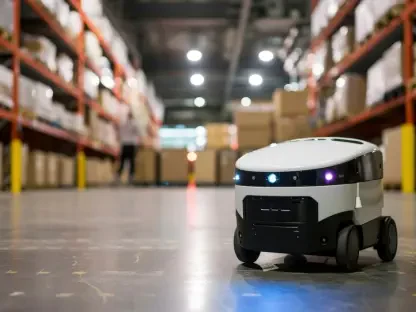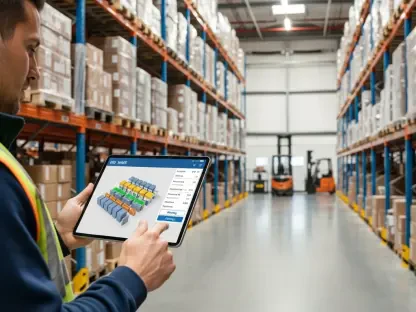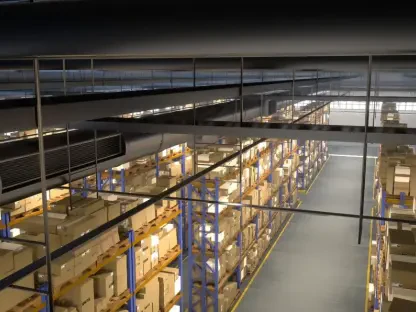In today’s rapidly evolving logistics landscape, embracing digital transformation is crucial. Rohit Laila, a seasoned expert in logistics with a keen focus on technological innovation, shares his insights on the transition from blind to observable warehouses and the transformative impact of visibility on operations.
What are blind warehouses, and why do they pose challenges to modern logistics?
Blind warehouses are facilities lacking real-time visibility into their operations. This means they often rely on outdated inventory counts and manual processes, which can lead to inefficiencies. The lack of updated data makes it hard to predict disruptions or optimize workflows, creating significant bottlenecks in modern logistics that require speed and precision.
How does limited visibility in warehouses contribute to inventory inaccuracies, and what impact does this have on fulfillment?
When warehouses can’t accurately track inventory in real-time, they face a higher risk of discrepancies. These inaccuracies can lead to major fulfillment delays as orders might be based on incorrect stock levels. Fulfillment relies heavily on knowing what is available and where, and any deviation can impact delivery speed and customer satisfaction.
Can you explain how blind warehouses lead to lost productivity for employees?
In blind warehouses, employees often spend excessive time searching for products or manually entering data. This not only wastes time but also detracts from more strategic tasks that could add value. The continual manual effort affects employee morale and results in operational inefficiencies.
In what ways does the lack of visibility delay decision-making in warehouse operations?
Without a clear, real-time picture of what’s occurring in the warehouse, decision-making slows down. Managers might hesitate or rely on old data, increasing response times to disruptions. This delay can halt operations, leading to increased downtime and missed delivery deadlines.
How do cost inefficiencies arise from overstocking or stockouts in blind warehouses?
Blind warehouses often suffer from either overstocking or stockouts due to poor forecasting. Overstocking ties up capital in excess inventory that may or may not sell, while stockouts result in lost sales opportunities. Both scenarios create unnecessary costs and highlight the need for improved visibility to maintain optimal inventory levels.
What is meant by fragmented data in the context of warehouse operations, and why is it problematic?
Fragmented data refers to how information is often collected in disparate parts and systems without a cohesive strategy in place. This piecemeal approach leads to disconnected insights that don’t provide a comprehensive view of operations, making it difficult for managers to make informed decisions.
How does an Observable warehouse differ from a blind warehouse in terms of data collection and visibility?
An Observable warehouse integrates systems and technologies to collect real-time data across its operations. This continuous data flow provides immediate insights into inventory, logistics cycles, and labor productivity. Unlike blind warehouses, observable ones can swiftly adapt to changes, optimizing operations comprehensively.
What are some of the key systems and technologies used to transform a warehouse into an Observable facility?
Technologies such as sensors, IoT devices, Autonomous Mobile Robots (AMRs), computer vision, and digital twin platforms are essential. These tools gather and analyze data, offering a transparent view of warehouse operations across inventory, logistics, and environmental conditions.
Can you provide an example of a company that has benefited from becoming an Observable warehouse, and what improvements did they experience?
Ziegler, for instance, utilized Dexory’s solutions to transform its operations. The company saw improvements such as faster stock recovery and fewer errors. By observing operations in real time, they eliminated the need for lengthy stocktakes, leading to significant labor savings and more efficient resource allocation.
How does continuous monitoring of inventory in Observable warehouses eliminate the need for disruptive audits and manual reconciliations?
Continuous monitoring means that inventory levels are updated in real time, eliminating the necessity of stopping operations for manual counts. Real-time data ensure that inventories are always current, reducing the margin for error and the need for periodic audits.
What are the primary benefits of visibility in warehouse operations?
Visibility enables faster and more accurate decision-making, enhances productivity, and reduces waste. With clear insights into operations, warehouses can optimize workflows, improve accuracy in order fulfillment, and lay a foundation for implementing advanced technologies like AI and automation.
How does real-time data contribute to faster and smarter decision-making in warehouses?
Real-time data provides immediate insights, enabling managers to prioritize tasks efficiently and adjust workflows on the fly. This rapid adaptability is crucial for maintaining operations fluidly and addressing any arising issues promptly.
In what ways can increased visibility lead to increased productivity in warehouse operations?
Increased visibility cuts down on time wasted searching for stock or verifying data manually. Employees can redirect their efforts towards more strategic tasks, thus enhancing overall productivity and creating a more efficient workflow.
How does reducing waste and errors contribute to more efficient warehouse operations?
Discrepancies are minimized with real-time tracking, thereby lowering the risk of redundant processes such as duplicate orders or excess stock storage. This reduction in mistakes streamlines operations and optimizes the use of resources.
How does the foundation of visibility support the implementation of AI and automation in warehouses?
A visible operation provides the necessary data foundation that AI and automated systems require to function effectively. These technologies depend on accurate, real-time data to make decisions and automate repetitive tasks, driving efficiency and precision in operations.
How did DCL Logistics specifically benefit from deploying DexoryView, and what operational gains did they realize?
DCL Logistics saw a 14% increase in pallet location accuracy and ten times faster inventory counting. Such improvements significantly boost operational efficiency by reducing downtime and cutting labor hours, which are spent on high-value activities instead.
What industry trends are currently driving the need for more Observable warehouses?
Several factors include the growth of e-commerce with its speed expectations, ongoing labor shortages requiring resource efficiency, and supply chain unpredictability necessitating agile responses. These trends compel companies to adopt more observable, data-driven environments.
How is the growth of e-commerce impacting the need for agile warehouse operations?
With rising consumer demand for quick deliveries, warehouses must be nimble. The ability to respond swiftly to order changes and supply chain disruptions becomes essential, pushing the need for observable operations that can adapt and deliver efficiently.
How do labor shortages influence the shift towards Observable warehouses?
Labor shortages make it crucial to maximize the productivity of existing resources. Observable warehouses can operate more effectively with fewer people by leveraging technology to automate routine processes and extract more value from staff engagements.
Why is data visibility crucial in responding to supply chain volatility?
Visibility allows for immediate identification of and response to supply chain disruptions. Real-time data helps anticipate and mitigate the impact of such challenges, maintaining operational continuity and competitive service levels.
According to the 2025 McKinsey report, how do companies with real-time warehouse visibility outperform those without it?
Firms with real-time visibility are reportedly 33% more likely to meet or exceed customer expectations and reduce fulfillment costs. They possess the agility to adapt to market demands and efficiently manage resources, leading to increased customer satisfaction and cost savings.
What steps can a warehouse take to begin the transformation from blind to Observable operations?
It starts with assessing current processes and identifying areas lacking visibility. Introducing technologies like sensors and IoT devices, integrating data systems, and fostering a mindset of continuous improvement are pivotal steps in this transformation.
How does Dexory support warehouses in making the transition from blind to Observable, and what role does mindset play in this shift?
Dexory provides scalable solutions that integrate with existing systems, offering a seamless transition to enhanced visibility. However, a significant component is the mindset shift toward embracing continuous improvement and tech adoption as an integral part of operations rather than a mere upgrade.
Do you have any advice for our readers?
In this fast-evolving industry, embracing technology and data is no longer optional. Cultivating a mindset open to innovation and continuous improvement is key to staying competitive. Prioritize creating a transparent, data-driven environment that can adapt quickly to changes, turning visibility into a strategic advantage.









